- Why do bank swallows reside in road cuts?
- How big are the bank swallow colonies?
- Who digs the burrow for mating? Male or female?
- When do they huddle with one another?
The Bank swallow is a small, slender song bird. In its typical adult appearance, the bird is white on the underneath and brown on top of its feather coat. And a dark band runs across and extends all the way down to the middle of its chest.

Read on to get interesting information about bank swallow bird facts, physique, and pictures.
It has a small bill and supports long wings of about 25-29 cm which help it during flight. They are usually 12-14 cm in length and weigh around 10-19 grams. Traditionally, the bank swallows nest in colonies along the streamside banks of North America. But they can also be found across Europe and Asia.
The British name for bank swallow is ‘Sand Martin’ and is commonly used across Britain.Other Spanish and French names for the bird are also commonly used in the respective countries.
Bank Swallow Habitat
They live in low areas mostly around rivers, streams, ocean coasts or reservoirs.The territories they are found in are either vertical cliffs or banks. Here they nest in colonies which include up to 20,000 nests!
In past, bank swallow bird was commonly found around natural bluffs or on the streamside. However, with the seemingly increased eroding, they have re-located their colonies to more man-made sites like quarries made from sand or gravel, or road cuts.
These locations offer the same support as a vertical cliff and allow for stability of their nests.
As you can see in bank swallow pictures, these nests are very carefully made and placed. Each nest is made in such a way that it forms a chamber. The male member uses his small, cone shaped bill along with feet and wings to dig burrows which are perpendicular to the ground level and go about 25 inches into the side of the bank.
These burrows eventually lead to the nest chamber. The male widens the burrows upwards and from both sides in such a way to maintain constant inside temperature.
Then the female member builds the nest by constructing a mat of straw, grasses, leaves, or rootlets. She collects such things from around the banks. This mat is 1-inch thick and 5-inch in diameter to offer support and firmness.
Bank Swallow Breeding Style
Since the bank swallows make nests in large colonies, they do it around loose soils so that it is easy to burrow in. Similarly, these areas are located near water bodies to get a vertical space for the birds to fly.
Each individualfirst chooses a colony and then a suitable location for the nest within that area. Interestingly, it is the male that digs the burrow before it has a mate. It is only then that a female hovers over the burrow she chooses. She finally mates with the male in that nest.
The Bank swallows carefully choose a location that is in the upper third part of the bank so that few ground predators can attack them.
They mostly eat insects like bees, wasps, ants, butterflies or moths. Since they live near water, it is easy for the bank swallows to catch food. They fly at a height of about 50 ft above open water or ground and catch insects. They feed either singly or with large groups from their colonies.
Distinctive Behavioral Patterns
Bank swallows have a set of distinctive behavioural patterns that instantly distinguish them from other such bird species. These include the seemingly different pattern of flying with shallow, fluttery wing beats.
While flying, they glide for 2 seconds but have a less twisty and straighter flight than other swallows. Bank swallows are extremely social. This can be seen clearly from their large colonies also.
They are rarely ever alone and have developed complex social behaviours. During the extreme cold weather, they are seen huddling with one another and even with other swallows. However, they also commonly fight with one another for nest locations, mates, or nest materials.
Bank Swallow Life Threats
Despite their small size, bank swallows are very interesting birds. They are present in a large and stable number. Even though monitoring them isn’t very easy, there are no evident threats to their survival and population size.
This doesn’t however mean that there aren’t any factors which might cause a decrease in their number. These factors generally include changes in their nesting areas, like erosion and floods. Similarly, road building projects that remove banks or make them less steep are unsuitable for bank swallows.
Since they are found together in their colonies in large numbers, any harm caused to bank swallows brings large scale destruction for their population.
Latest Birds
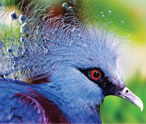
Victoria Crowned Pigeon
With its name...read more
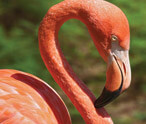
Information About Flamingos
Flamingos are...read more
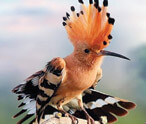
Hoopoe Bird
Famous for its distinctive crown of...read more
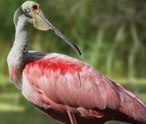
Roseate Spoonbill
The beautiful Roseate Spoonbill...read more
Latest Mammals
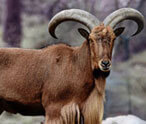
Types Of Goats
Goat is a mammal that belongs... read more
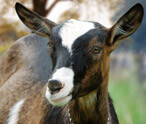
Goat Facts
A domesticated form the wild goat of...read more
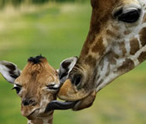
Giraffes Facts
Giraffes are creatures with extremely...read more









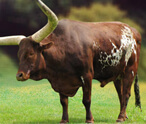

















Largest Birds of Prey in the World by Size and Weight
Also called raptors, the birds...
List of Birds That Fly in V Formation
Did you ever feast your eyes on the amazing phenomenon...
Birds of Prey List
A bird of prey is also known as a raptor or a hunter. It belongs to the group of...
Millipedes Vs Centipedes
Centipedes and millipedes are both arthropods from the group...
Difference Between Warm Blooded and Cold Blooded Animals
Every living organism...
Top 10 Extremely Dangerous Insects
The insects have been grouped in class 'insecta' of...
Sheep Vs Goat
The goat and the sheep are related to each other through the same family. They...
Animals with Blue-colored Blood
Humans and other vertebrates have red-colored blood running...
Birds, Mammals And Reptiles
Before coming to the question of common ancestry of birds...